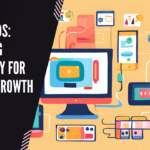Table of Contents
Introduction
In today’s competitive business landscape, understanding your audience is crucial for success. Market research provides invaluable insights into consumer behavior, preferences, and trends, allowing businesses to make informed decisions and tailor their strategies accordingly. By delving deep into the minds of your target market, you can unlock the key to attracting and retaining customers. In this article, we will explore the various aspects of market research and delve into strategies that will help you master the art of understanding your audience.
Diving into Market Research

Effective market research involves a multi-faceted approach that combines qualitative and quantitative methods to gather comprehensive information. By analyzing and interpreting data, businesses can develop a deep understanding of their target audience’s needs, desires, and pain points. Let’s explore some key elements of market research:
Demographics: The Building Blocks
Demographic characteristics such as age, gender, income, education, occupation, and location lay the foundation for understanding your audience. By segmenting your target market based on these factors, you can create personalized marketing campaigns that resonate with specific groups. Conduct surveys, analyze census data, or leverage social media insights to uncover demographic information that informs your marketing strategies.
Psychographics: A Deeper Connection
While demographics provide a general snapshot of your audience, psychographics dig deeper into their attitudes, values, lifestyles, and preferences. Understanding the psychographic makeup of your target market helps you tailor your messaging and positioning. Conducting focus groups, and surveys, or analyzing online behavior can offer insights into your audience’s motivations, interests, and opinions.
Customer Feedback: A Goldmine of Insights
Your existing customers are an invaluable resource for extracting insights. Gather feedback through customer satisfaction surveys, online reviews, and social media listening. Identifying patterns, pain points, and areas of improvement will enable you to refine your products, services, and marketing strategies. Actively engage with your customers and address their concerns to build long-term relationships.
Competitor Analysis: Learning from Others
Analyzing your competitors can provide valuable insights into the market landscape and help you differentiate yourself. Assess their target audience, marketing tactics, pricing strategies, and unique selling propositions. Identify gaps and areas where you can provide a better experience or offer a unique value proposition to capture market share.
Technology and Trends: Staying Ahead
Embracing technology and staying abreast of industry trends is essential in understanding your audience. Leverage analytics tools, social listening platforms, and AI-powered sentiment analysis to gather real-time data and monitor conversations relevant to your brand. Stay ahead of the curve by following industry publications, attending conferences, and participating in relevant forums.
Key Insight: Market research goes beyond demographics to understand the psychological and emotional aspects of your audience. By combining quantitative and qualitative data, you can create impactful marketing strategies.
The Power of Personas

Developing buyer personas is a powerful technique to humanize your target audience and gain a deeper understanding of their needs, motivations, and pain points. By creating fictional representations of your ideal customers, you can tailor marketing messages that resonate on a personal level. Here’s how to create effective personas:
- Research & Data: Gather quantitative and qualitative data to inform your personas. Conduct surveys, and interviews, and analyze customer behavior.
- Segment: Group customers with similar characteristics into segments. Look for patterns in demographics, behavior, and preferences.
- Persona Creation: Give each persona a name, age, occupation, and background. Describe their lifestyle, aspirations, pain points, and buying motivations.
- Personalization: Tailor your marketing messages, content, and product offerings to each persona’s preferences and needs.
- Empathy: Put yourself in your persona’s shoes, understanding their challenges, desires, and emotions. Craft solutions that resonate with them.
Callout: “Personas allow you to walk in your customers’ shoes, enabling targeted and impactful marketing strategies.”
Leveraging Market Research: Strategy and Implementation

Once you have gathered valuable insights through market research, it’s time to put them to work. Here are some ways to leverage market research effectively:
Product Development: Meeting Customer Needs
Tailor your products or services to address the specific needs and pain points of your target audience. Conduct usability tests, gather feedback, and iterate on your offerings to deliver a customer-centric experience. Use market research to guide product enhancements and new feature development.
Marketing Campaigns: Reaching the Right Audience
Craft persuasive marketing campaigns by aligning your messaging, advertising channels, and creative elements with your audience’s preferences and motivations. Leverage the insights gained from market research to choose the most effective platforms, tone, and communication channels. Monitor campaign performance and optimize based on real-time data.
Customer Experience: Enhancing Satisfaction
Use market research to identify areas where you can improve the customer experience. Whether it’s streamlining your website navigation, optimizing your checkout process, or enhancing customer support, align your efforts with your audience’s preferences. Regularly gather feedback, measure satisfaction levels, and make continuous improvements.
Pricing Strategy: Finding the Sweet Spot
Market research helps you understand the price your target audience is willing to pay for your products or services. Analyze competitor pricing, conduct surveys, and test different pricing strategies. Find the balance between perceived value and affordability to maximize your revenue.
Key Insight: Market research empowers businesses to align their product development, marketing campaigns, customer experience, and pricing strategies with their audience’s preferences.
Conclusion
Understanding your audience is a fundamental aspect of successful marketing. Through market research, businesses can uncover valuable insights into their target audience’s demographics, psychographics, and preferences. By leveraging this knowledge, organizations can develop personalized marketing strategies, create impactful buyer personas, and align their offerings to meet customer needs. With market research mastery, businesses can connect with their audience on a deeper level, driving growth and building long-lasting relationships.
Now, armed with the tools and strategies outlined in this article, it’s time to embark on your market research journey and unlock the hidden potential within your audience.
Remember, market research is an ongoing process. Continuously gather data, adapt your strategies, and stay in tune with your audience’s evolving needs. Only through understanding your audience can you truly thrive in today’s dynamic business landscape.









